Artist Eric van Hove has been very busy with his recent project. He has taken apart a V12 Mercedes engine and had the parts reproduced using a wide variety of unexpected materials. He had the help of local Moroccan artists who made the parts for him using their unique skills and different replacement materials.
These components are made from some of the unlikeliest substances you could imagine. They include; white cedar wood, high Atlas red cedar wood, walnut wood, lemon wood, orange wood, ebony wood of Macassar, mahogany wood, thuya wood, Moroccan beech wood, pink apricot wood, mother of pearl, yellow copper, nickel plated copper, red copper, forged iron, recycled aluminum, nickel silver, silver, tin, cow bone, goat bone, malachite of Midelt, agate, green onyx, tigers eye, Taroudant stone, sand stone, red marble of Agadir, black marble of Ouarzazate, white marble of Béni Mellal, pink granite of Tafraoute, goatskin, cowskin, lambskin, resin, cow horn, rams horn, ammonite fossils of the Paleozoic from Erfoud, Ourika clay, geometric terra cotta with vitreous enamel (zellige), green enamel of Tamgrout, paint, cotton, argan oil, cork, henna and rumex.
The V12 Laraki, as it is called, took nine months for van Hove to complete. Each of the 465 parts and 660 bolts which constituted the engine were recreated and then put together into one of the most breathtaking pieces of automotive art. The engine may not be functional, but it represents both the skill and craft that Morocco possesses, as well as the incredible natural resources and local materials of the region.
The dismantled V12
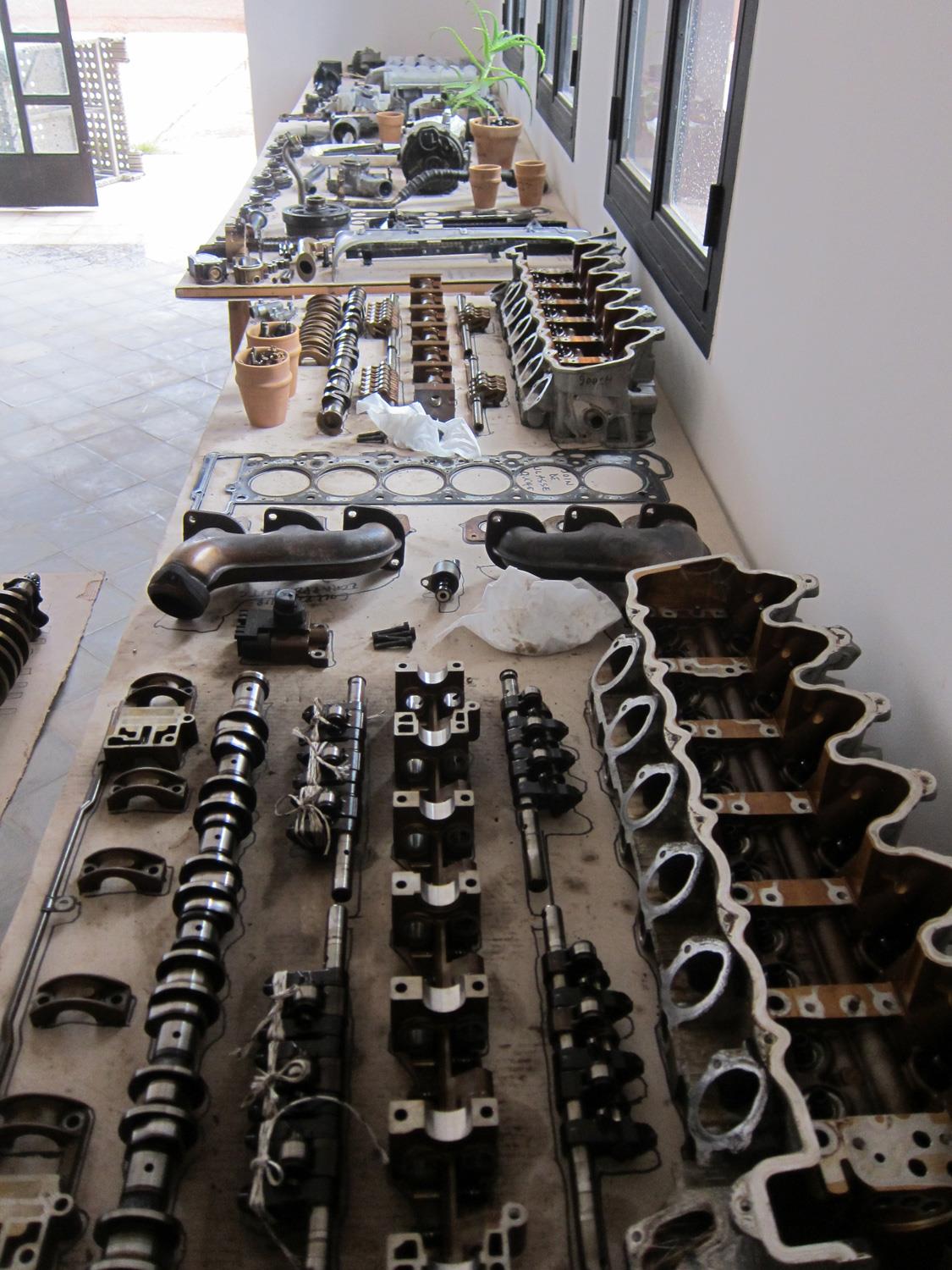
The recreated pieces
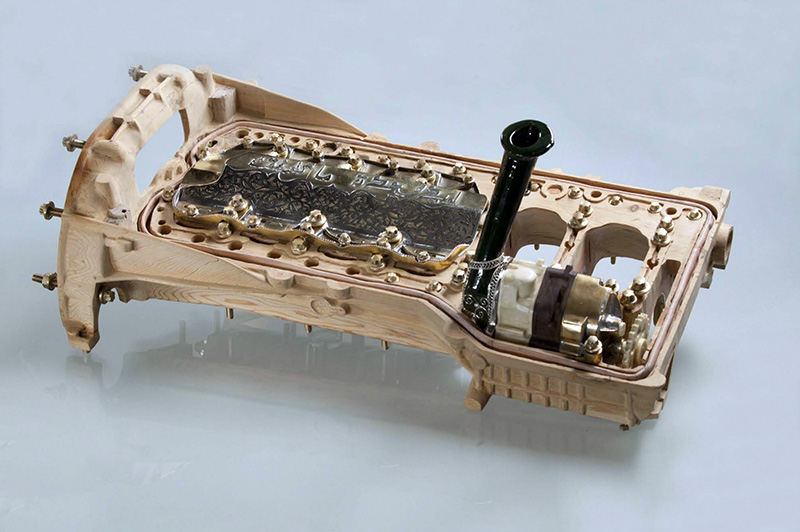
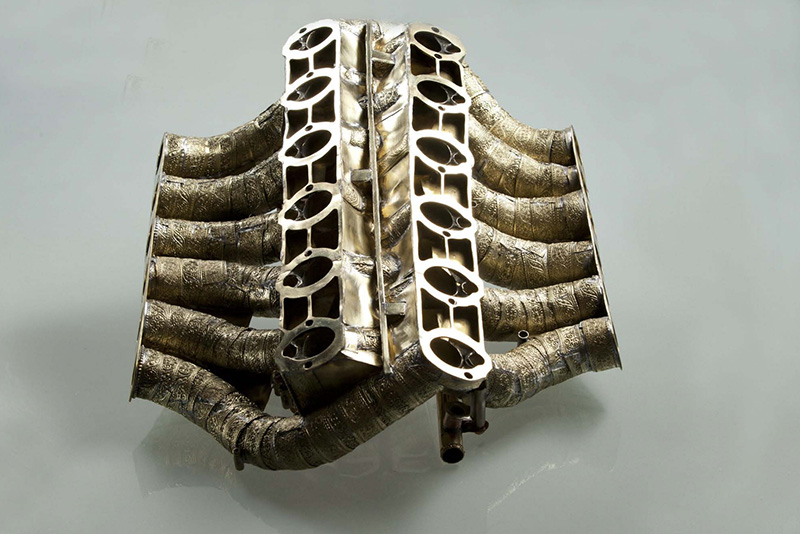
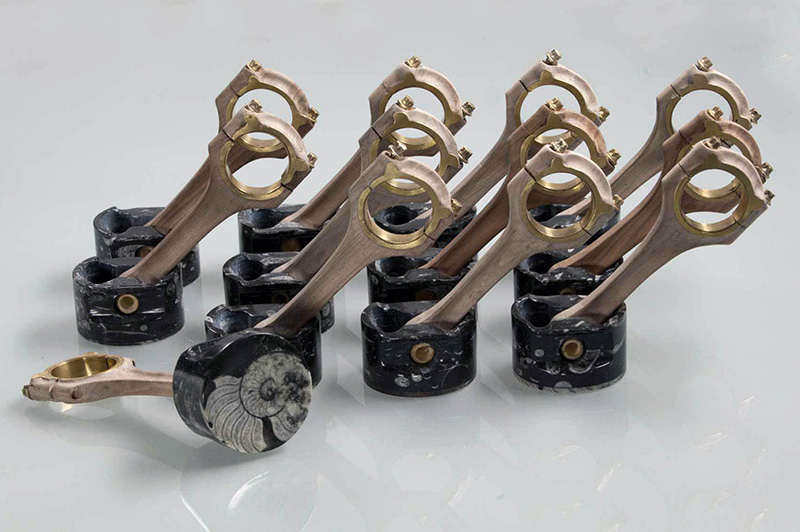
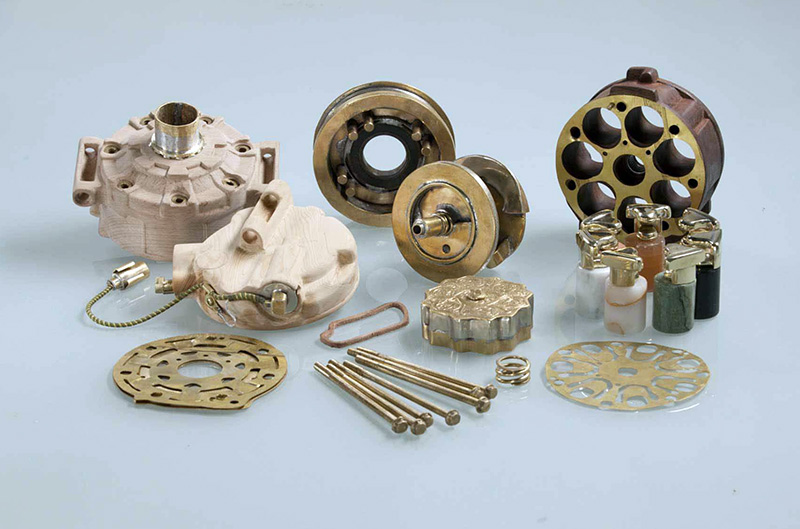
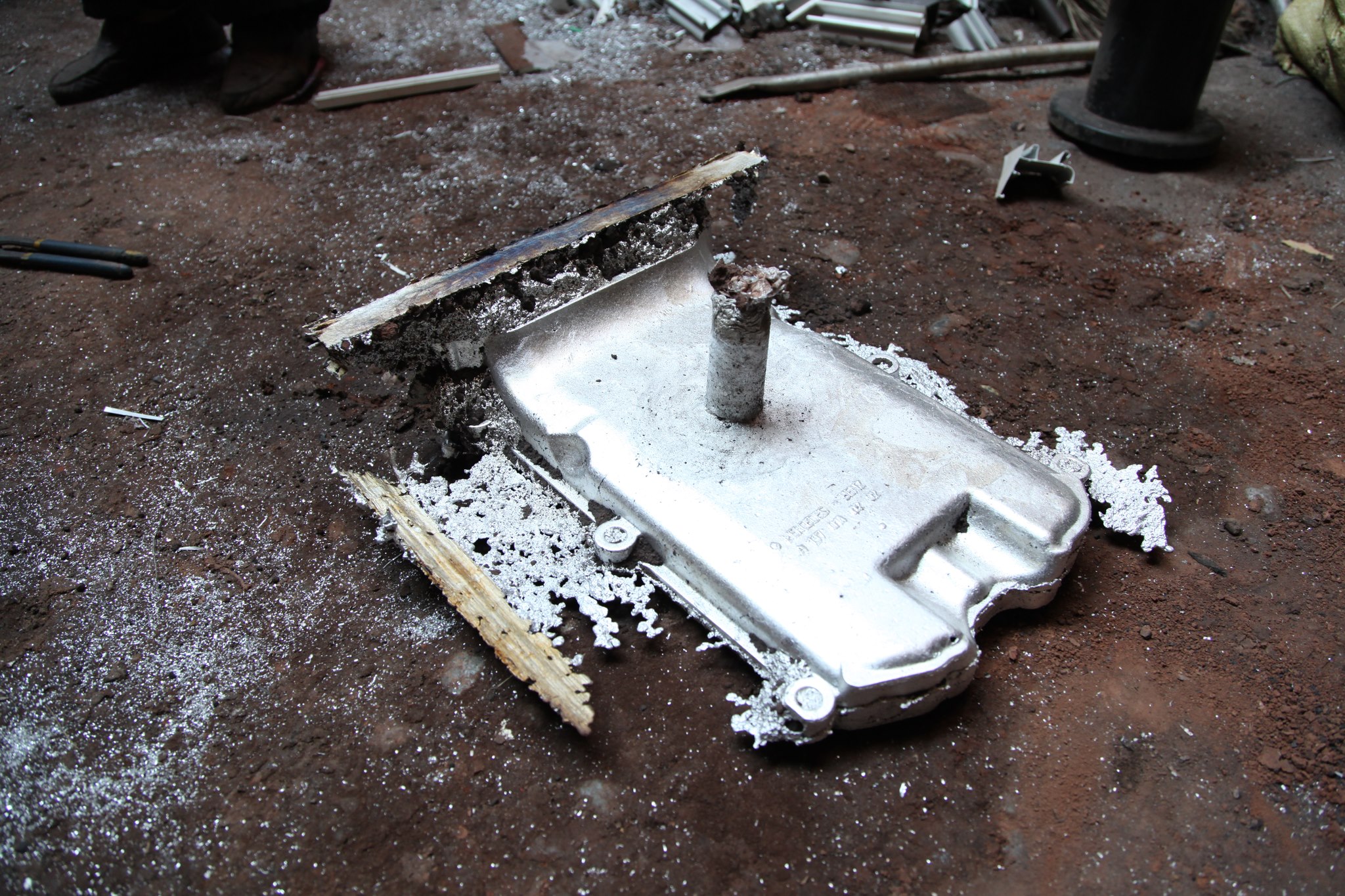
Eric van Hove
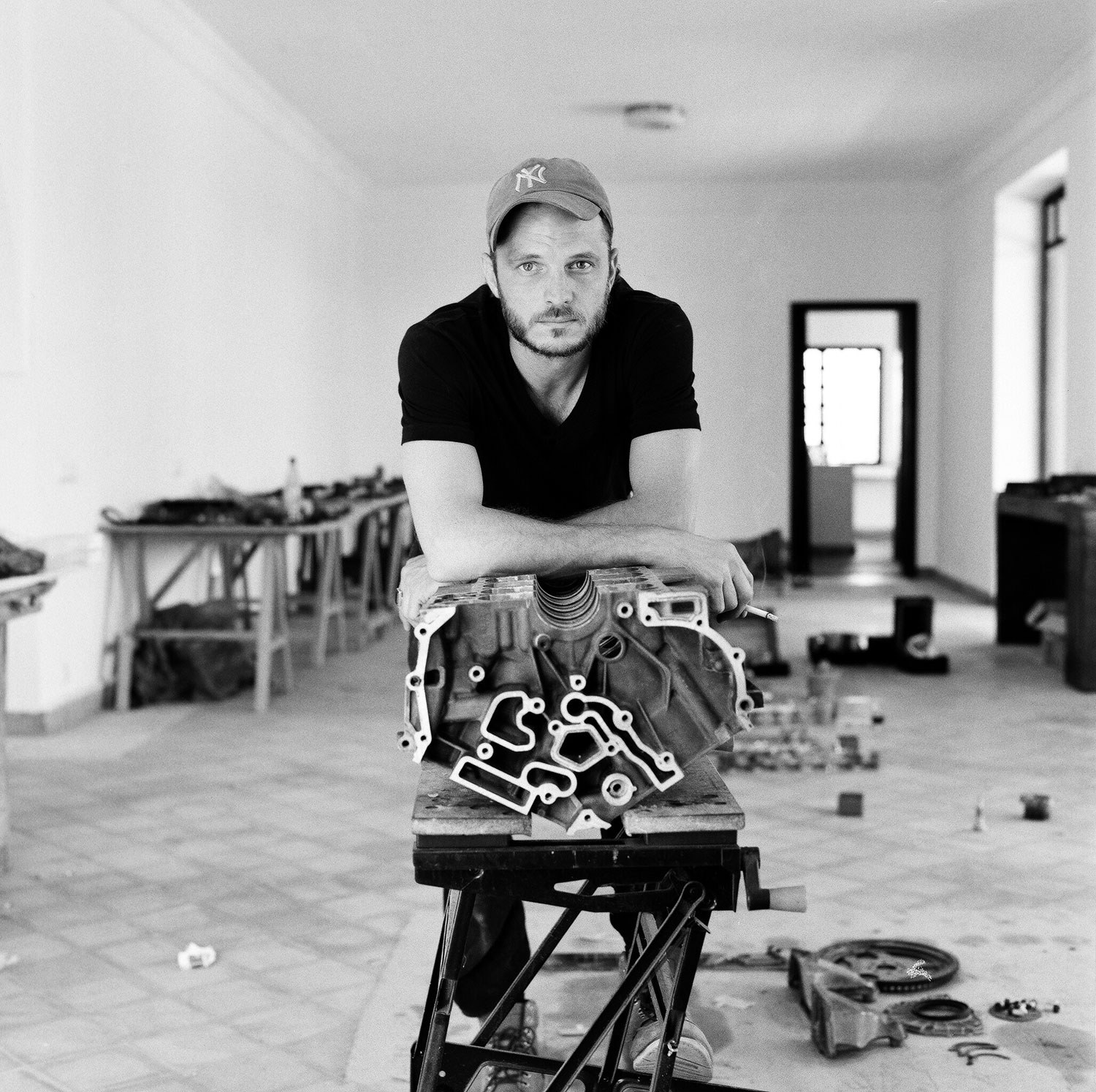
The completed V12 Laraki
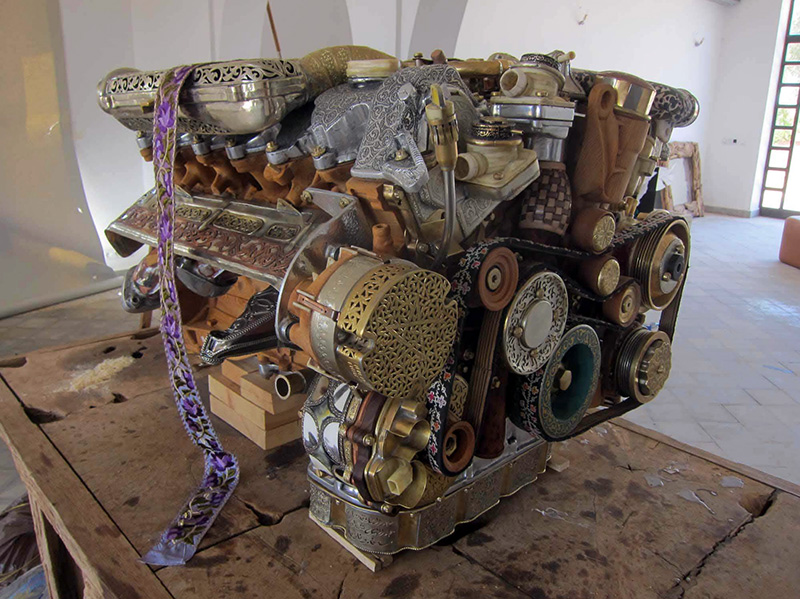



does it works?